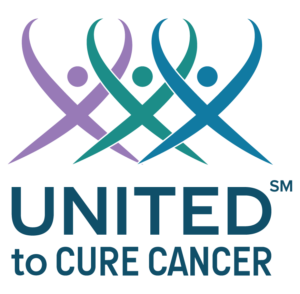What is a gynecologic cancer?
“Gyne-” derives from the Greek for woman, female. It’s said to also be related to the Proto-Indo-European word “-gwen,” which meant “honored woman,” and even Queen. “-ology” is from the Greek and means “the study of.”
So, one might say that “gynecology” is the study of women and caring for them in the highest, most efficacious, and complete way. In fact, the oldest known medical text is almost 4,000 years old and deals with just this – the care and wellness of half of the human population.
Gynecologic cancers are those affecting the female reproductive organs – vulva, vagina, cervix, uterus, endometrium, fallopian tubes, and ovaries. Because breast cancer also occurs in men, it is usually treated as a separate category.
Who is at risk?
Women, naturally. Even if they have had some of their reproductive organs removed for other medical reasons, they still face a cancer risk for external genitalia. According to the American Cancer Society, in the United States, almost 100,000 new gynecologic oncology cases were diagnosed in 2015.
Why haven’t I heard of gynecologic oncology before?
For the simple fact that all of the gynecologic cancers occur almost three times less often than breast cancer. Whereas heart disease is the leading cause of death in American women, all types of cancer combined make up the second leading cause of death. Of these, breast cancer is the leader, followed by lung and colorectal. Uterine cancer is only the fourth most common cause of death among women with cancer. That’s why you may not have heard of it.
Wait a minute, I thought breast cancer rates were getting better? I’ve done some of the walks.
You’re right. Rates of death from breast cancer have been on the decline since 1989. Vast improvements in morbidity and mortality have been made thanks largely to awareness raising campaigns, like Susan G. Komen’s, as well as improved public education around early detection, not to mention advances in treatment.
That’s why we’ve founded Cancer’s Worst Enemy.
First, to bring that level of awareness to the rest of women’s cancers so that they, too, can be beaten sooner, quicker, easier, and more often.
And ultimately, to eradicate cancer altogether.
Do we know what causes gynecological cancers?
Like all other cancers, there are many variables at play including genetics, environment, and lifestyle choices. While researchers have discovered genes involved in the expression and growth of cancer, they’ve also found epigenetic factors that may turn these genes on or off. In the case of most cervical cancers as well as some vaginal and vulvar cancers, the immediate causal agent is a very common, sexually transmitted virus called Human Papillomavirus, or HPV.
Can gynecologic cancer be prevented?
Certain types of gynecologic cancers can be detected and handled early such that treatment is expected to be successful and a most complete cure possible.
Of course, you can lower your risks of developing any cancer anywhere by eating right, exercising, wearing sunscreen, and talking about your family history with your physician.
What type of doctor do you see for gynecologic cancers?
Gynecologic cancers should be treated by a sub-specialist called a gynecologic oncologist who is board certified in GYN/ONC. This is a doctor who is first board certified in obstetrics and gynecology (OB/GYN), then completes an intensive three-to-four-year fellowship in treating gynecologic cancers. After this specialized women’s cancer treatment fellowship, they go through another level of board exams and certification. These doctors are referred to as double-boarded, or double-board certified in OB/GYN and GYN/ONC.
According to the National Comprehensive Cancer Control Program (NCCCP) of the Center for Disease Control (CDC), “Studies have consistently demonstrated that gynecologic oncologists … more often adhere to standard treatment guidelines resulting in increased survival from gynecologic cancers.”
How do you treat these women’s cancers?
The treatment plan is as unique as the woman for whom it is crafted and it depends upon many factors, including the type and stage of cancer as well as her own wishes. As an allopathic – or Western-trained – doctor, the gynecologic oncologist can draw from a vast toolbox of treatment options, such as surgery, even non-invasive and robotic types of surgery, radiation and/or chemotherapy.
In a well-rounded, whole-patient practice, the medical staff and office team may also offer complementary healing modalities from other cultures, which are increasingly being borne out by empirical Western research. Therapeutic options might include bodywork, meditation and relaxation techniques, counseling support, and other non-medical interventions.
Do I dare ask what the gynecologic cancer statistics are?
Here are the estimates from 2015. About 98,000 women were diagnosed with a gynecologic cancer. Some 30,000 women died from these diagnoses. Here is the breakdown by type of gynecologic cancer:
Types of Cancer Estimated New Cases Estimated Deaths
Cervical cancer 12,340 4,030
Ovarian cancer 21,290 14,180
Uterine cancer 54,870 10,170
Vaginal cancer 4,070 910
Vulvar cancer 5,150 1080
We can change the experience, and even the occurrence, of cancer.
All of us at Cancer’s Worst Enemy are working towards a new reality. A healthy vitality. Through education, awareness, early detection and so much more. Together, we can eradicate cancer in our lifetimes so that future generations don’t have to.
Join this epic movement and change the stories you’ll get to tell your grand-kids.
Sign up today to receive the latest news, resources, updates and opportunities to eradicate cancer.
But, first. The easiest, quickest, and most impactful thing you can do is take care of yourself. Take the free, 3-minute online test now to assess your risk and encourage your friends to do the same.
About Us
Cancer’s Worst Enemy exists to eliminate cancer from the human experience.
Together, we’re putting it where it belongs. In the history books.
Know Your Risk

Complete the test now.
It could be the 3 minutes that
save you a lifetime.

